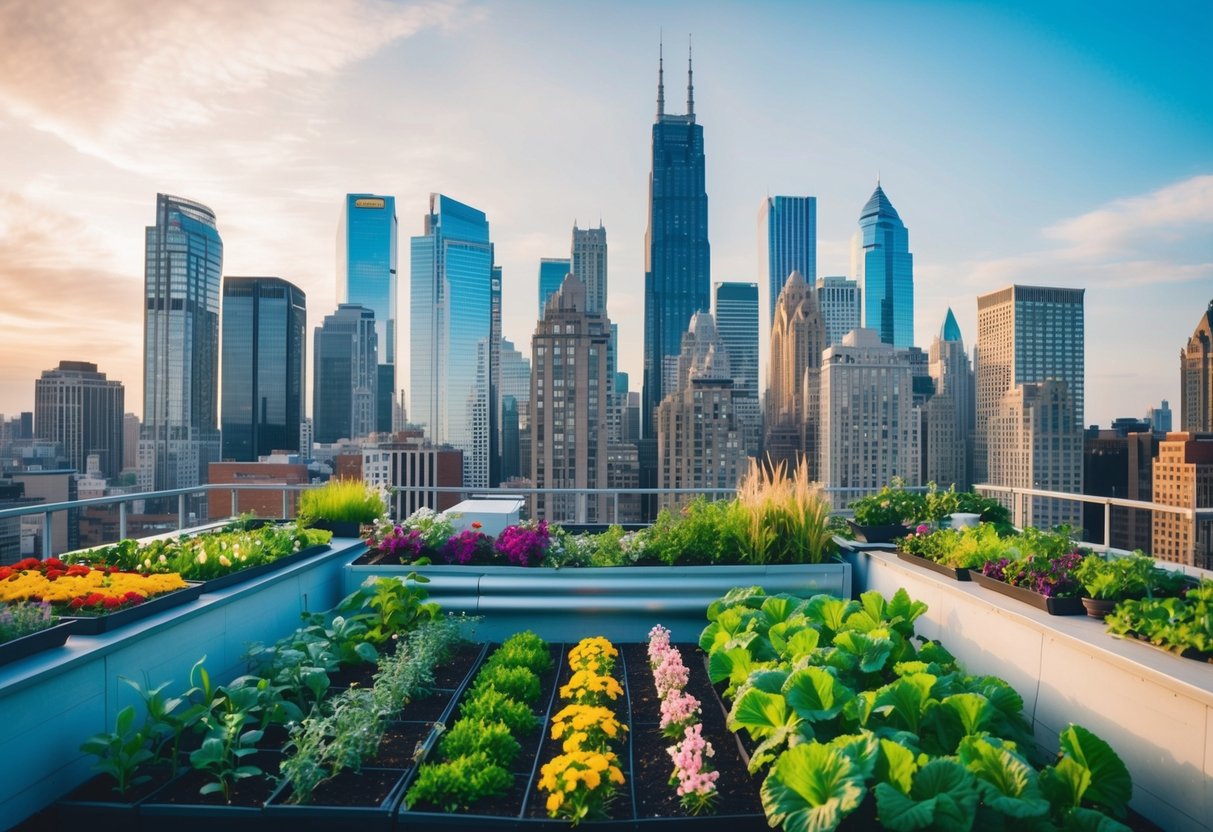
Urban gardening offers a unique way for city dwellers to escape the concrete jungle and reconnect with nature. Rooftop gardens transform unused spaces into vibrant, productive areas that can yield fresh produce right at your doorstep. Besides providing a sustainable source of food, these gardens can enhance air quality, reduce urban heat, and create calming green sanctuaries high above the bustling streets.
Starting an urban rooftop garden involves a few key steps that anyone can follow. Selecting suitable plants that thrive in the local climate is crucial. Additionally, understanding weight restrictions and ensuring proper water drainage are essential for maintaining a healthy and safe garden space. By optimizing sunlight exposure and utilizing container gardening techniques, one can efficiently maximize space and yield.
Rooftop gardening is not just about plants; it’s about creating a personal haven amidst city life. With the right preparation and care, anyone can cultivate a thriving green space that brings joy and sustainability to urban living.
Understanding the Basics of Rooftop Gardening
Rooftop gardening is an innovative solution for city dwellers looking to create a green space above their bustling urban environment. Key factors include assessing roof capacity for structural integrity, ensuring efficient drainage, and choosing appropriate containers and soil.
Assessing Roof Capacity and Safety
Before starting a rooftop garden, it is crucial to assess the roof’s structural capacity. This includes understanding the weight restrictions and ensuring that any additional load from soil, plants, and water does not compromise safety. Consulting with a structural engineer or a professional is often recommended to confirm the roof’s strength and to identify any potential issues.
Awareness of the weight each section can bear helps in selecting suitable plants and materials for the garden. Using lightweight containers can minimize strain on the structure. Taking these precautions helps in creating a safe and thriving rooftop garden that enhances urban living without risking structural damage.
The Importance of Drainage Systems
Proper drainage is vital to prevent water accumulation, which can lead to leaks and structural problems. Rooftop gardens must be equipped with reliable drainage systems that efficiently direct excess water away from the building. This prevents water-related issues that might otherwise harm the roof and its contents.
Selecting suitable materials for drainage and frequently checking for clogs is essential. Implementing gravel layers or specialized drainage mats can be effective solutions. Ensuring that water can flow freely away helps maintain the garden’s health and longevity, preserving both the plants and the roof.
Selecting Containers and Soil
Choosing the right containers and soil is critical in rooftop gardening. Containers should be made of durable, lightweight materials to avoid exceeding the roof’s weight capacity. Options like fabric pots or fiberglass containers are often suitable choices for this environment.
The soil used must facilitate proper drainage and support plant health. A mix tailored for container gardens can offer the right balance of nutrients while ensuring good water retention and drainage. Carefully selecting these components contributes significantly to the success and sustainability of an urban rooftop garden.
Designing Your Rooftop Garden
In urban environments, creating an attractive and functional rooftop garden involves careful planning of the layout, selecting plants that can withstand the climate, and integrating vertical elements to maximize space.
Planning the Layout for Aesthetics and Functionality
A rooftop garden must strike a balance between beauty and practicality. Start by assessing the available space and sunlight exposure, which are crucial in determining the best arrangement. Think about pathways to allow easy access without disturbing the plants. Arrange seating areas to take advantage of views or shaded spots.
Consider incorporating a mix of containers and raised beds for diverse plant types. This flexibility allows the garden to adapt to changing needs or tastes over time. Using varied heights and textures can enhance the visual interest of the garden.